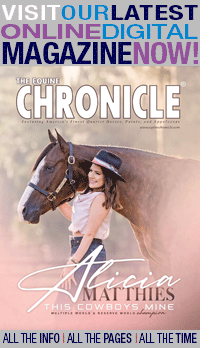Laboratory Reference Ranges are NOT Normals

By: Eleanor M. Kellon, VMD
When you get a report from a diagnostic laboratory, you will see tests listed in a column on the left, followed by the test results (sometimes with an asterisk or a H = high, L = low mark) and a final column with the reference range. Some even call this a normal range, but it’s not.
In a perfect world, every laboratory would establish its own reference ranges for each test it runs by testing a minimum of 120 healthy individuals then defining the reference range as the range of values that fit 99% of the samples. Sounds fairly straightforward, but there are many problems, not the least of which is defining “healthy” and the possibility that individuals are being tested which actually have inapparent disease.
Labs sometimes rely on ranges from the test manufacturer, or from other tests they have used in the past, which is even less accurate. Even if the ranges are truly being derived from healthy horses they may change with things like age, sex, reproductive status, and exercise. Alkaline phosphatase enzyme is a good example. Growing horses normally run much higher than adult ranges because this enzyme is involved in bone growth and remodeling.
Some laboratory values are regulated by the body to stay in a very tight range in a healthy individual, such as blood pH and oxygen saturation. Others have wider variation and multiple factors that may influence them, like higher BUN with high protein intake, being a stallion, dehydration, or kidney disease.
One of the most variable tests is insulin. Insulin will normally fluctuate from virtually undetectable with fasting or very low sugar and starch intake, up to 40 – 60 uIU/mL as a peak after a grain meal. That makes the reference range extremely wide, but what is actually normal must be more narrowly defined by the circumstances at the time of testing.
Insulin is released in response to blood sugar. Would you expect a horse that had been fasted to have the same insulin as he would have after eating 5 lbs of sweet feed? Of course not. This is why you can’t use laboratory ranges to determine if a horse’s insulin is normal. They cover too many possible scenarios.
A very well-designed recent study established an upper normal of 5.2 uIU/mL for fasted horses, very different from the 20 uIU/mL that has been used for years: https://wp.me/p2WBdh-O3 . Normal for horses eating only pasture was established at 13 uIU/mL in a 2006 study, also significantly below the 20uIU/mL ceiling. These are the values used in the ECIR Inc. calculator https://www.ecirhorse.org/ir-calculator-leptin.php.
Insulin is a bit of an extreme example but it does illustrate how mistaking reference ranges for normal can easily lead to misdiagnosis. Another common scenario is older horses with red blood cell parameters slightly below the reference range being labelled anemic. In fact, the combination of reduced activity and lower metabolic rate means they need less circulating oxygen and their counts are actually normal for their physiology.
Laboratory reference ranges are a guide but determining whether a result is truly normal or abnormal takes more than just looking at those numbers.
About ECIR Group Inc.
Started in 1999, the ECIR Group is the largest field-trial database for PPID and EMS in the world and provides the latest research, diagnosis, and treatment information, in addition to dietary recommendations for horses with these conditions. Even universities do not and cannot compile and follow long term as many in-depth case histories of PPID/EMS horses as the ECIR Group.
In 2013 the Equine Cushing’s and Insulin Resistance Group Inc., an Arizona nonprofit corporation, was approved as a 501(c)3 public charity. Tax deductible contributions and grants support ongoing research, education, and awareness of Equine Cushing’s Disease/PPID and EMS.
THE MISSION of the ECIR Group Inc. is to improve the welfare of equines with metabolic disorders via a unique interface between basic research and real-life clinical experience. Prevention of laminitis is the ultimate goal. The ECIR Group serves the scientific community, practicing clinicians, and owners by focusing on investigations most likely to quickly, immediately, and significantly benefit the welfare of the horse.










